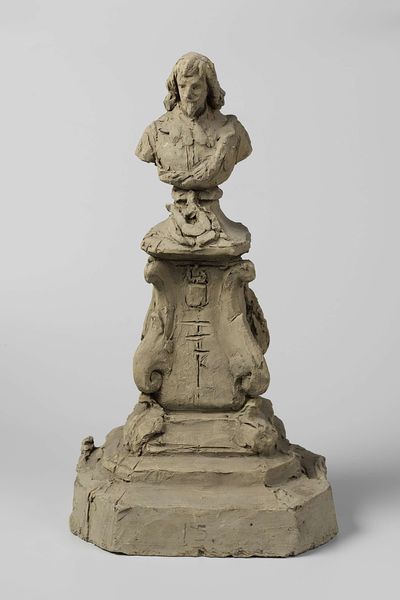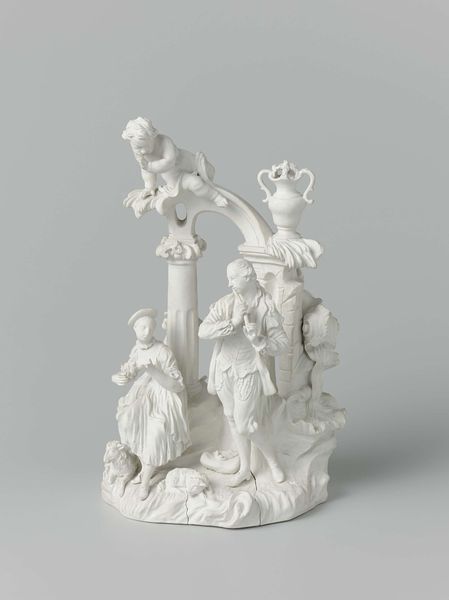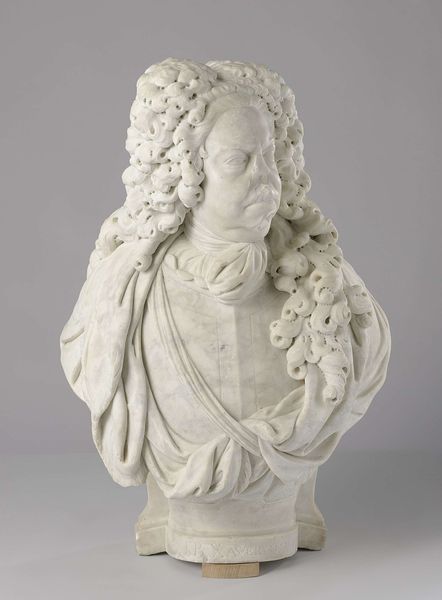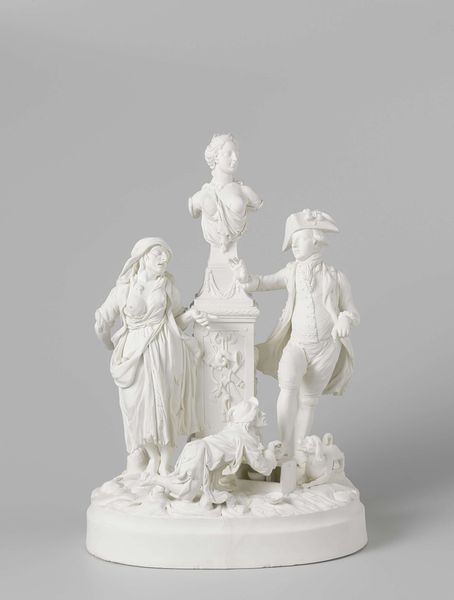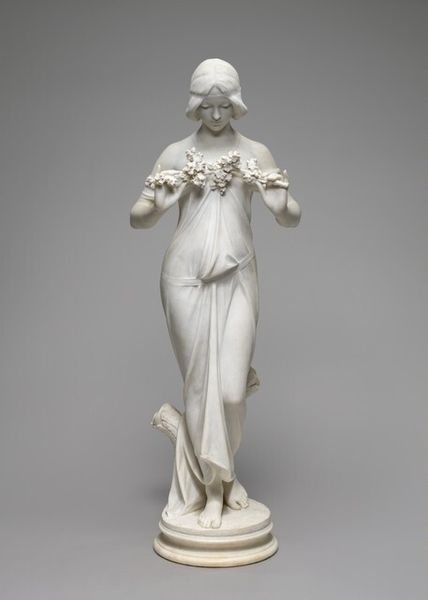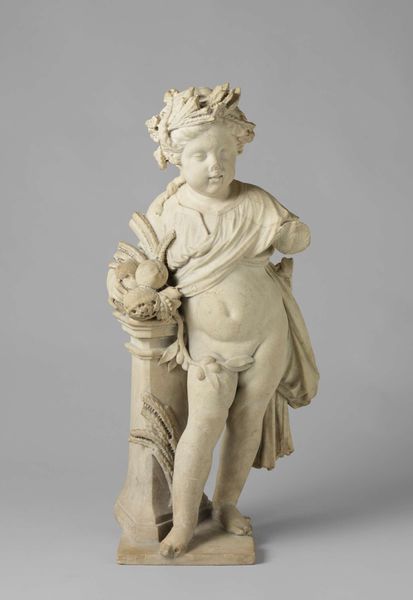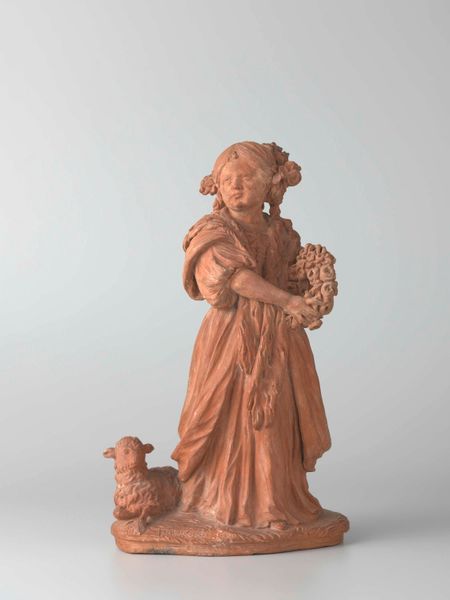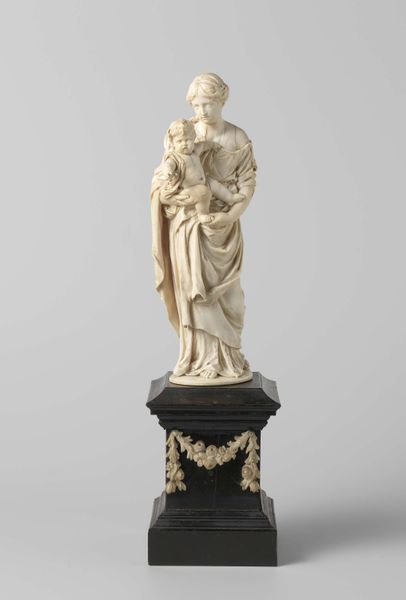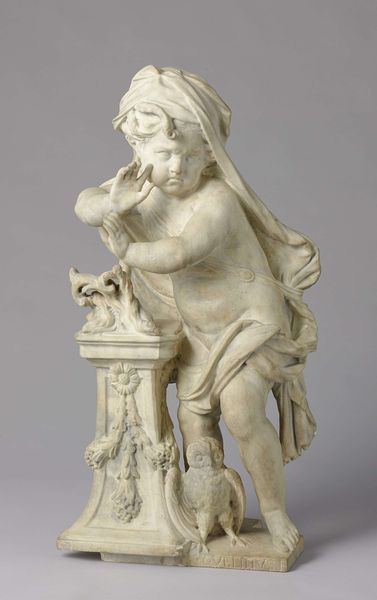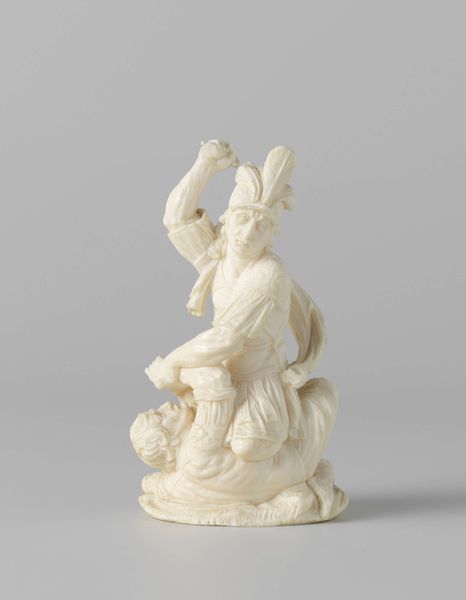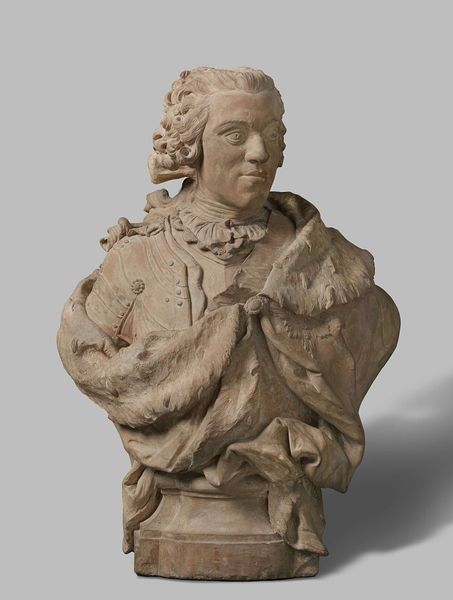
sculpture, marble
#
portrait
#
neoclassicism
#
sculpture
#
classical-realism
#
figuration
#
sculpture
#
history-painting
#
academic-art
#
marble
Dimensions: height 29.7 cm, length 14.6 cm, width 15.3 cm
Copyright: Rijks Museum: Open Domain
Curator: The first thing that strikes me is the coldness. It's a chilling effect, amplified by the monochrome color palette. Editor: Today we’re observing the “Bust of Jacob Willemsen,” a marble sculpture completed in 1774. It exemplifies the Neoclassical style, demonstrating the revived interest in classical antiquity through portraiture. Curator: Absolutely. And notice how the drapery is arranged; its rhythmic folds and curves cascade softly down the bust, adding depth through the play of light and shadow. I find its pure whiteness stark, almost like a frozen moment captured in time. Editor: Neoclassicism was about order, rationality, and an almost severe adherence to classical forms. Considering the context of 18th-century Europe, this sculpture reflects the Enlightenment’s values. It showcases an idealized image of intellect and status, integral components within burgeoning societal structures. Curator: Precisely. The figure is presented regally and stiffly, perched atop a carefully rendered pedestal; this staging contributes immensely to its commanding presence. See the inscription tablet embraced by a decorative garland on the pedestal and the putto at its base adding layers to this visual dialogue. Editor: Ah, the presence of the putto introduces the concept of posthumous memorial, where art served as a way to ensure the remembrance and celebration of individuals within historical and cultural narratives. This sculpture serves as an example of the socio-political and intellectual climate in the late 18th century. Curator: And indeed, one might explore the contrasts between the stiff, somewhat detached expression on the bust versus the vitality conveyed by the lively putto to create nuanced interpretations within a broader philosophical context. Editor: So it presents to us a view of memory, not merely as a recording of the past, but as an active re-engagement with the ideals and forms from history as they serve the current moment’s needs. Curator: What is ultimately haunting to me about this piece, despite its objective realism, is that even with this beautiful execution and form, the marble renders it somewhat devoid of human warmth, perhaps because it’s only through seeing what remains of a life that we feel connected. Editor: This interaction underscores how the language of Neoclassicism actively fostered discussions of value, legacy, and the socio-political forces acting behind cultural production in art at the time.
Comments
rijksmuseum about 2 years ago
⋮
Joannes de Mol had this portrait of his teacher Willemsen made in the German city of Schretzheim, after an engraving by Reinier Vinkeles. He did this with a specific goal in mind, namely to test the skills of the porcelain worker who was seeking employment at the Loosdrecht factory.
Join the conversation
Join millions of artists and users on Artera today and experience the ultimate creative platform.

